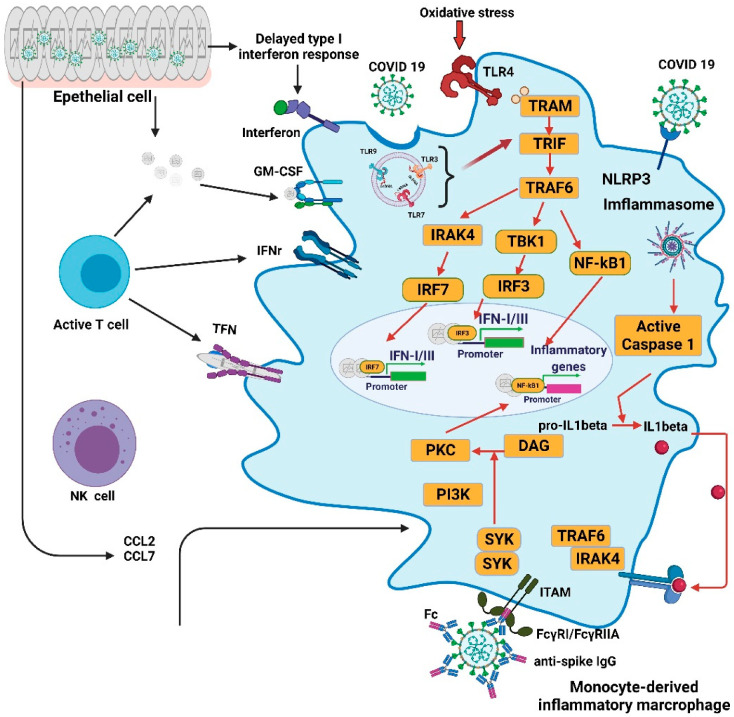Figure 1.
Overactivation of monocyte-derived macrophages and hyperactivity of inflammation in COVID-19. Several mechanisms can cause the overactivation of macrophages seen in patients with COVID-19. A delayed response by type I interferons leads to enhanced cytopathic effects of microbial threats and promotes the enhanced release of monocyte chemokines by alveolar epithelial cells, resulting in the recruitment of blood monocytes in the lungs. Monocytes differentiate into TH17-like proinflammatory macrophages through the activation of the Janus kinase (JAK)-signal transducer and activator of transcription 3 (STAT3) pathways. Proinflammatory cytokines, including granulocyte-macrophage colony-stimulating factor (GM-CSF), tumor necrosis factor-α (TNFα), and interferon-γ (IFNγ), further promote the recruitment and activation of monocyte-derived macrophages. Oxidized phospholipids (OxPLs) accumulate in infected lung epithelial cells and activate monocyte-derived macrophages through the Toll-like receptor 4 (TLR4)–TRAF6–NFκB pathway. IgG1 is the host antiviral neutralizing antibody, and RNA viruses usually mislead the infected host to produce non-neutralizing IgG3 antibodies. The binding virus and the IgG3 antibody can be taken up by the Fcγ receptor (CD64 or CD32) of macrophages. This process is called antibody-dependent enhancement (ADE). This enables the virus to gain access in order to infect macrophages and to activate the NLRP3 inflammasome, causing the secretion of mature IL-1β and IL-18. Interleukin-1β can enhance the activation of macrophages in an autocrine or paracrine manner, and it also reduces type I interferon production. Activated monocyte-derived macrophages contribute to the COVID-19 cytokine storm by releasing numerous proinflammatory cytokines. CCL, CC-chemokine ligand; CXCL10, CXC-chemokine ligand 10; ISG, interferon-stimulated gene; ITAM, immunoreceptor tyrosine-based activation motif; TRAM, TRIF-related adaptor molecule.

